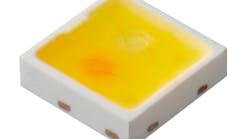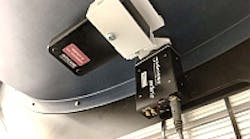According to the Foundation, Nakamura has "developed a new, revolutionary source of light – bright-blue, green and white LEDs and a blue laser." The press release goes on to say that "Nakamura’s innovation has launched a totally-new sector in light-producing semiconductor research and development. His development also made possible the widescale industrial production of efficient, energy-saving LED lights."
Pekka Tarjanne, Chairman of the International Selection Committee, said that Nakamura "worked with great determination for decades, and even severe setbacks have not prevented him from achieving something that other workers in the field regarded as almost impossible: using a reactor system of his own design to develop a solid material, in this case gallium nitride, into a powerful light source producing blue, green and white light, and also creating a blue laser. The lighting applications now made possible by his achievement can be compared with Thomas Edison’s invention of the incandescent lamp."
Nakamura has undeniably made a substantial contribution to nitride device development, particularly his work on p-type gallium nitride. However, the comparison with Edison (or indeed Berners-Lee), while good for generating headlines, is questionable.
The positioning of Nakamura as the inventor of blue, green and white LEDs ignores, for example, the contributions to this field of Professor Akasaki of Nagoya and Meijo Universities, who began work on nitride devices in the mid-eighties, or the work of companies such as Toyoda Gosei and Osram Opto Semiconductors that have patent portfolios rivaling those of Nichia.
Nakamura left Nichia in 2000 and subsequently sued his former employer for compensation relating to the patents that he filed on Nichia's behalf. An initial award of $189 million was reduced to around $8 million on appeal after Nichia argued that Nakamura's role had been overstated and that Nichia's success was due to the work of a large team of researchers and engineers, as well as substantial investment on the part of the company (see Nichia settles patent dispute with former researcher - Jan 2005).
Nichia also said that a key patent in the case, relating to an innovative MOCVD growth technique (and also mentioned in the Foundation's statement), has very limited relevance. Nichia's main rivals such as Cree and Toyoda Gosei have never used the patented technology and Nichia itself does not use the technology in production. In fact, Nichia has now abandoned this particular patent (Nichia abandons the 404 patent - Mar 2006).




